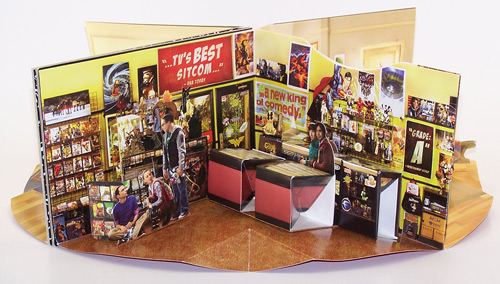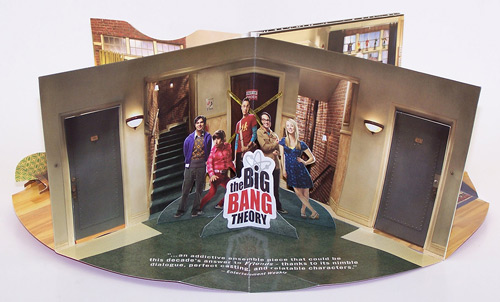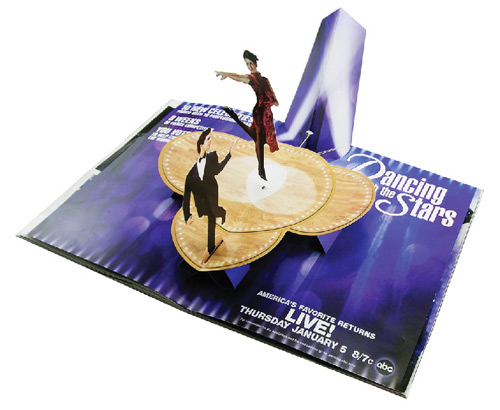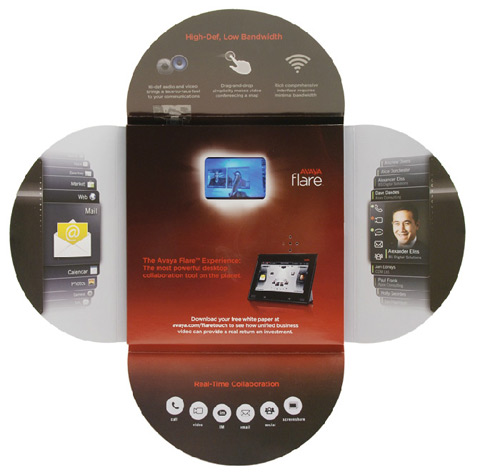David Rosendale of Americhip combines paper with some of the coolest technology around. Americhip creates printed brochures that talk, magazine pages that light up, and engineers movement into otherwise static advertisements. They design intricate works of art that move, pop up, twist, flip and soar from the printed page.

The Big Bang Theory created for Emmy voters.

Rosendale’s background comes out of fine arts where he studied painting and print making, then got into creating pop-up books through an interest in bas-relief. From there the company he was then working for moved into commercial pop-ups for magazine inserts. “People like the surprise element of the pop-up or videos going off when you open something up,” says Rosendale. “It acts as a good way to get people interacting with the piece.”

leaps off the page using accurate die cuts from SteelRules.
He joined Americhip to do Research & Development, moving them into a competitive position using CAD software and a cutting table. Today he also runs the Paper Engineering Department which brings together video, audio, lights and paper into whatever the object might be.
Rosendale has been working with Vellum®-based software since 1993 when he started with Ashlar’s™ Vellum 3D, the precursor to Graphite™ CAD software. Then he moved to Score! packaging software, which was based on the Vellum/Graphite engine, prior to it being purchased by Artios and cancelled. Today Rosendale uses AlphaCorr Rules™, also based on the familiar Graphite engine.
His team at Americhip uses Rules in all phases of design and production starting with the creatives, then cutting blank samples on their machine, making color sample layouts for the printer so they can cut them on the table, then color samples for the clients to approve, and finally cutting the sheets from the press run. They also use Rules to make the cover for the book should there be one.

delivered sales information in a unique petal design.
Rosendale has experience with other CAD software but he prefers Rules for its versatility. There’s never been a problem he hasn’t been able to solve. Others on the team use Illustrator or Pro E and they have no problem transferring files back and forth using a number of different file formats. In fact, he told us how easy it was to bring an Illustrator or other file into Rules to get extremely accurate shapes and die lines around an object or character for a pop-up.
Lately the team’s been working on video pieces using cores into which they drop electronics. Using Rules they work out the different layers of chipboard or plastic that need to be cut to receive the components. The sophisticated layering feature within Rules makes it easier to designate the proper cuts.
The intuitive interface and gentle learning curve make Rules an invaluable tool in Americhip’s studio:
This site is not endorsed by, sponsored by or affiliated with Warner Bros., The Big Bang Theory, ABC,Dancing With the Stars or Avaya. All trademarks that appear on this webpage are property of their respective owners.